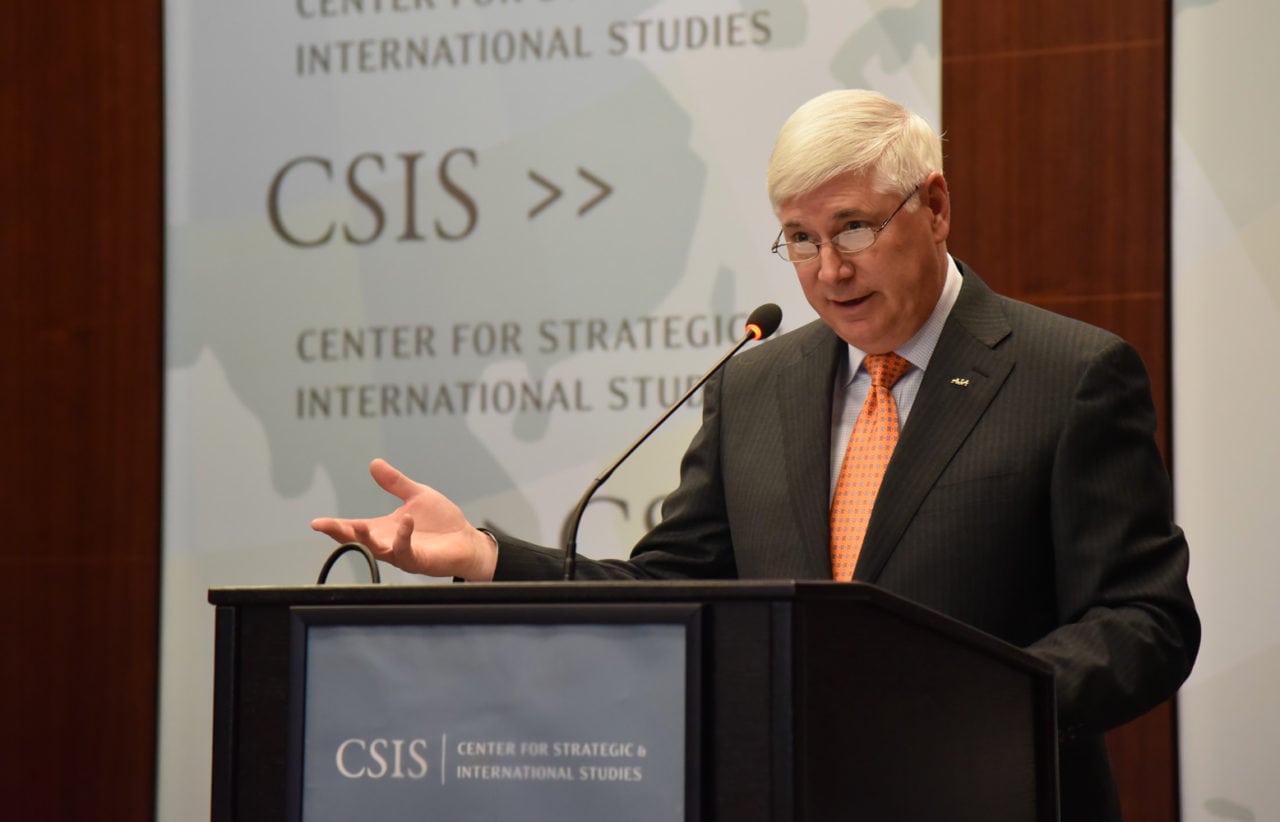[Avionics Today 12-16-2015] The Aerospace Industry Association’s (AIA) year-end event in Washington, D.C., on Tuesday touted several of the year’s policy and industry accomplishments in the aerospace and defense arenas, but kept its focus on undertakings still necessary to bolster the industry going forward. Though U.S. aerospace manufacturers can look forward to expanding government budgets in the coming year, new orders for aerospace products are seeing a big drop thus far in 2015.
 |
| AIA CEO David Melcher. Photo: AIA |
Here, we focus on the impact 2015’s events have had on the aerospace industry, as well as what AIA perceives as the challenges the industry has yet to face.
2015 Policy: The Budget, Ex-Im Bank and R&D
In 2015, despite a lengthy delay, the Export-Import Bank of the United States was reauthorized for four years earlier this month, marking what AIA CEO David Melcher views as a major win for the aerospace industry this year.
“A little known lending institution’s fate may not seem the stuff of high drama, but when a lobbying campaign bankrolled by a few ideologically driven billionaires put Ex-Im’s Congressional Reauthorization in limbo last summer, the drama was real enough indeed. Thousands of American jobs and billions in commercial satellite launch services and aircraft sales were put in jeopardy,” said Melcher in his speech at the yearly luncheon. The bank was reauthorized in early December, but requires further Senate action to enable authorizations of more than $10 million — a category into which the majority of financed sales in the aerospace industry fall.
The industry can also look forward to significant relief from the budget caps imposed under the Budget Control Act of 2011, which was achieved for 2016 and 2017 with passage of the Bipartisan Budget Act of 2015.
“The bill allows for more leeway in making prudent investments in our national security, civil aviation and space capabilities,” said Melcher. The Bipartisan Budget Act has yet to be set in stone, but is on its way to becoming the law of the land in the fiscal year 2016 appropriations.
AIA has also noted that there are hopeful signs that a yearlong omnibus with an extension of the Research and Development (R&D) Tax Credit will pass shortly.
2015 So Far: The Numbers
Policy aside, the latest numbers on the aerospace industry released by the U.S. Department of Commerce indicate something of a slowdown in 2015 sales. While aerospace manufacturers logged a record $230 billion in shipment — a 9 percent year-over-year increase over 2014 levels for the first three quarters of 2015 — declining orders indicate market softness.
Aerospace manufacturers reported a staggering 32 percent year-over-year loss for new orders for aerospace products placed in the first 9 months of 2015. These losses were led by a 40 percent decline in orders for nondefense aircraft and parts manufacturing over 2014 levels. Meanwhile, orders for defense aircraft and parts as well as search and navigation equipment remained flat. New orders for 2015 include $165.2 billion for aircraft and parts as $41.6 billion for search and navigation equipment, according to AIA.
Foreign trade did see an increase, as the sector exported $92 billion of manufactured goods during the first three quarters, a 5.8 percent increase over the same period in 2014. This includes $81.3 billion in civil aircraft, engines, parts and space systems as well as $10.7 billion of military aerospace systems. Aerospace imports also saw an uptick of 2.7 percent to $43.6 billion when compared to the first three quarters of 2015.
2016 and Beyond: Upping Tech
While the year saw several technology gains — including the U.S. Marine Corps declaring that the F-35B Lightning II aircraft has reached Initial Operational Capability (IOC) in August — AIA is looking forward to future improvements to tech and Air Traffic Management (ATM) modernization to stimulate industry.
“This year we worked with FAA Administrator Michael Huerta to recommend improving FAA certification processes for new aircraft and we engaged with Congressional leaders to support the FAA Reauthorization bill that enables quicker FAA certification and enhance NextGen certification,” said Melcher. AIA has earmarked these as major initiatives for the aerospace industry next year, including upping gains in NextGen implementation by encouraging stable and predictable funding and adequate program flexibility to “maintain momentum and deliver results.”
Integrating Unmanned Aircraft Systems (UAS) into the National Airspace System (NAS) will also take center stage next year, as the FAA and industry work to devise and implement a plan that will push UAS into the skies as well as the commercial landscape.
“Whether you like those standards or do not like those standards based on the size and weight configurations in them, I think the point is that there need to be standards, because safety and security is at the foremost. There may be a lot of hobbyists who are outraged because of this, but I think we can all work this out over time,” said Melcher.
AIA will also focus on improving cyber security and pushing policy for the Trans-Pacific Partnership (TTP) in the coming year in order to expand the U.S. aerospace sector’s access to trade and worldwide economic gains.